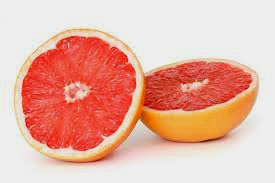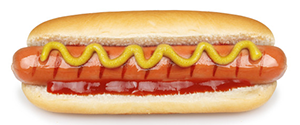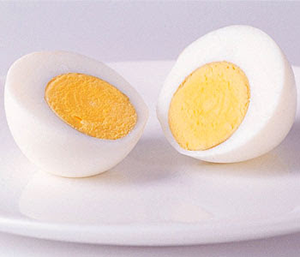If you want to lose weight quickly, you want to give The Military Diet a chance. There’s no connection to any armed services, but like the name implies it’s very rigid in it’s prescription. And, as of today The military diet is currently one of the world’s most talked about “diets.”
Several sources may say there is no research to prove this works, but I beg to differ. It’s a very strict low-calorie diet. And, although brief in length limiting yourself to so few calories is typical and proven to work. But the spin is interesting.
How it works
The plan claims that you may lose up to 10 pounds in a week if you follow it. The military diet is also free. There is no book, expensive food or supplement you need to buy.
It’s a very strict, low-calorie diet with food combinations that seem very strange since they’re not typical foods you see in a diet program – just basic foods you might have every day. There are a strict set of foods to eat for breakfast, lunch, and dinner, but that’s it. There are no snacks, and there’s no room for variances for food choices based on your tastes. Hence the phrase military diet.
The military diet plan involves a 3-day meal plan followed by 4 days off, and the weekly cycle is repeated again and again until you reach your goal weight. The break is key, as it’s not recommended to continue the diet plan for over 3 days.Proponents of the diet claim that it was designed by nutritionists in the US military in order to get soldiers into top shape quickly.
The Military Diet isn’t such a unique diet plan to create such a hype. A restrictive three-day plan is nothing new. However, it prescribes combinations of foods that will help to curb your appetite while giving you enough protein and carbs to go through the day without crashing. There are folks who’d prefer to recommend a ton of veggies, which will give you more volume and nutrients. However, I know sooo many people who claim those diets are difficult to follow – they have more success with higher fats and lower volume. The Military Diet has both, which could be the reason for its interest – and success.
What you can eat
Every morsel you’ll eat on this diet has been chosen for you ahead of time. You’ll need to follow the plan completely to get the best results.
Total calorie intake during this phase is roughly 1,100–1,400 calories per day. It doesn’t include superfoods like salmon, almonds, or quinoa. Instead, you’ll find normal choices, like canned tuna, hard-boiled eggs, and cheddar cheese. Some meals have breads, but they aren’t the healthy whole grains you’d expect.
You can drink water and black coffee or tea, but no soda, milk, juice, or alcohol. Stick to the menu as much as you can. You’re allowed to switch out some foods if you have food allergies or other dietary needs. But only make swaps that the diet approves.
Exercise
Exercise is recommended, as part of your normal daily regimen. However, running and lifting heavy weights should be avoided or done with caution. With such a low calorie intake in the first 3 days you may run out of energy, or just decide to go off the diet entirely. Light exercise is fine, or at least your typical routine. Overall, there is no strict exercise component.
Dietary Restrictions or Preferences?
With some tweaks, most adults can follow the diet:
Vegetarians and vegans: The plan lists easy swaps for the eggs, tuna, meat, and hot dogs: Have nuts, lentils, tofu, and soy/tofu dogs instead. Vegans can eat nut/tofu cheese instead of cheddar, plus soy ice cream and vegan cottage cheese.
Gluten-free diet: When the menu calls for toast or crackers, choose gluten-free options.
Low-salt diet: You can get low-salt versions of all of the processed foods on the menu. Swap saltines for rice cakes or low-salt melba toast.
The Meal Plan
This is the 3-day meal plan on the military diet.
Military Diet: Day One
Day one is about 1,400 calories. Start with a half grapefruit, slice of toast, scoop of peanut butter and some coffee for breakfast. And for lunch, it’s tuna, toast and more coffee (or caffeinated tea). On the dinner menu: three ounces of meat, a cup of green beans, half a banana, a small apple and, yup, a cup of vanilla ice cream.
Breakfast:
- A slice of toast with 2 tablespoons of peanut butter.
- Half a grapefruit.
- A cup of coffee or tea (optional).
Lunch:
- A slice of toast.
- Half a cup of tuna.
- A cup of coffee or tea (optional).
Dinner:
- A 3-oz (85 grams) serving of meat with a cup of green beans.
- A small apple.
- Half a banana.
- One cup vanilla ice cream.

Military Diet: Day Two
Day two is down to about 1200 calories. For breakfast you’ll have an egg, a slice of toast and half a banana. For lunch, another hard-boiled egg, some saltines and a cup of cottage cheese. Then for dinner, have those hot dogs handy. You’ll eat two mystery tubes plus some fruits and veggies, finished off with more vanilla ice cream.
Breakfast:
- A slice of toast.
- One hard-boiled egg.
- Half a banana.
- A cup of coffee or tea (optional).
Lunch:
- One hard-boiled egg.
- A cup of cottage cheese.
- 5 saltine crackers.
- A cup of coffee or tea (optional).
Dinner:
- Two hot dogs, with no bun.
- Half a cup of carrots and half a cup of broccoli.
- Half a banana.
- Half a cup of vanilla ice cream.
Military Diet: Day Three
On the last day of the diet, you’ll cut calories down to approximately 1,100 in the following breakdown. For breakfast, five saltines, an ounce of cheddar cheese and a small apple. Up next, just one egg and slice of toast for lunch. Then for the grand finale, a cup of tuna, half of a banana and one last cup of vanilla ice cream.
Breakfast:
- A 1-ounce slice of cheddar cheese.
- 5 saltine crackers.
- A small apple.
- A cup of coffee or tea (optional).
Lunch:
- A slice of toast.
- One egg, cooked however you like.
- A cup of coffee or tea (optional).
Dinner:
- A cup of tuna.
- Half a banana.
- 1 cup of vanilla ice cream.
Afterward
That’s it! Once you’re done with the three-day meal plan, you go back to your daily routine for the next four days. And, repeat if you’d like to lose more.
Does it Work?
One of the central claims of the Military Diet is that your meals are arranged in “fat-burning” food combinations. This is not confirmed with research. However, there is something to the food combinations helping you feel satisfied while eating very little. And, any time the calories you’re consuming are less than the calories you’re burning off throughout your day you’ll lose. For the short-term it has testimonials to back up the claims. But, for the long term it will give you more bang for the buck to focus on a sustainable diet that has healthy fruits and vegetables, whole grains, and the right amount of proteins.

Leave a Reply
You must be logged in to post a comment.